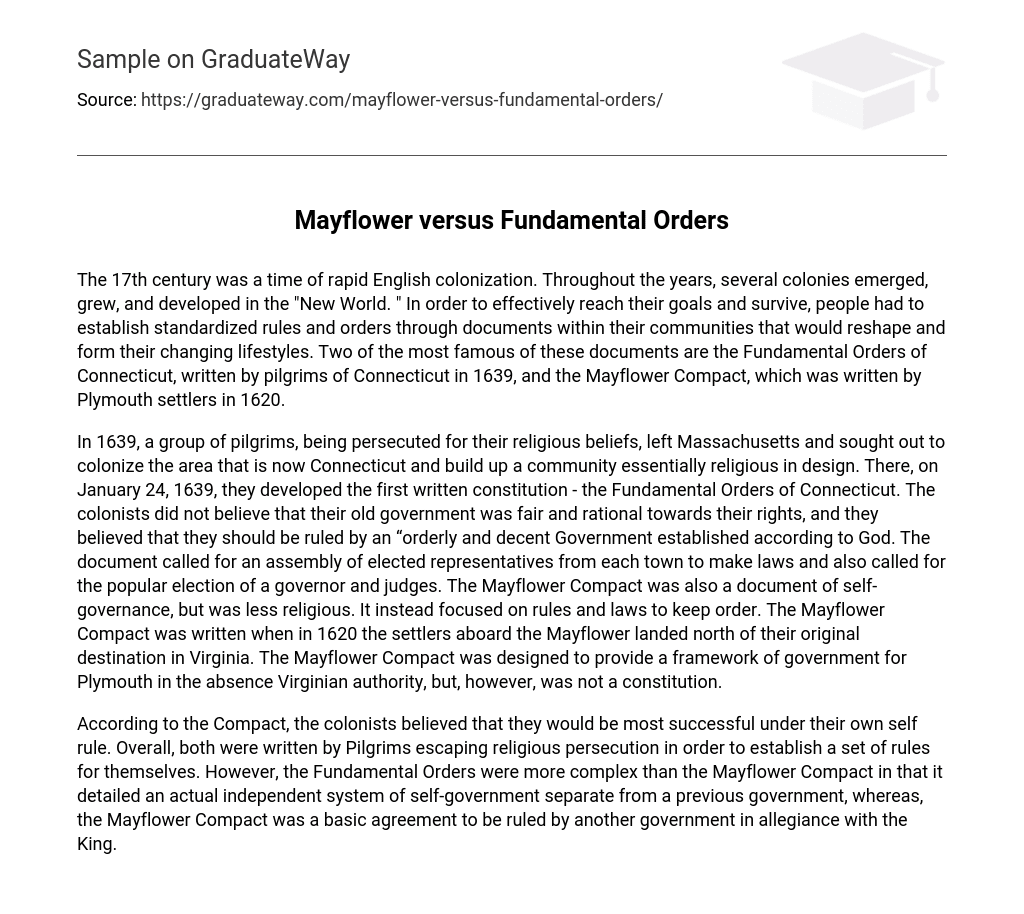The 17th century witnessed a significant increase in English colonization. Over time, numerous colonies were established and flourished in the “New World.” To ensure their success and survival, communities created standardized rules and regulations through various documents. These documents played a crucial role in shaping and adapting their evolving lifestyles. Notably, the Fundamental Orders of Connecticut, written by Connecticut pilgrims in 1639, and the Mayflower Compact, penned by Plymouth settlers in 1620, are among the most renowned of these documents.
In 1639, a group of religiously persecuted pilgrims migrated from Massachusetts to Connecticut to establish a religious community. On January 24, 1639, they created the Fundamental Orders of Connecticut, the first written constitution. Dissatisfied with their previous government’s treatment of their rights, the colonists sought a “orderly and decent Government established according to God.” This constitution called for elected representatives from each town to make laws and popularly elected governors and judges. The Mayflower Compact, written in 1620 when the Mayflower settlers arrived in Virginia instead of their intended destination, focused on maintaining order through rules and laws. While it provided a framework for self-governance in Plymouth due to the absence of Virginian authority, it was not a constitution.
The colonists believed that they would thrive under their own self rule, according to both the Compact and the Fundamental Orders. These documents were written by Pilgrims seeking refuge from religious persecution, with the purpose of establishing a set of regulations for themselves. However, the Fundamental Orders were more intricate than the Mayflower Compact as they outlined an independent system of self-governance detached from any previous government. On the other hand, the Mayflower Compact was a simple agreement to be governed by another authority in loyalty to the King.





